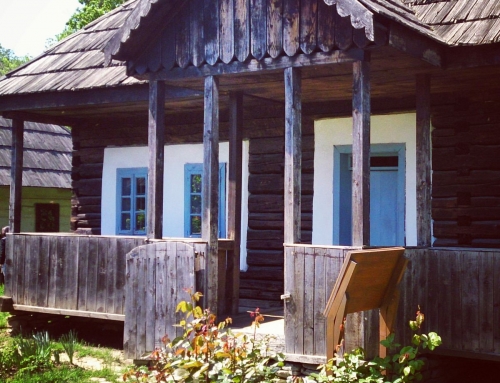Constantin Brancusi
Constantin Brancusi – memorial house and work.
The house where Constantin Brancusi spent his childhood is a monument of folk architecture built at the end of the 19th century. The house has three rooms: the sleeping room, the kitchen and the larder. The larder is the only room which doesn’t have a straight ceiling. From here was made the access in the attic. In front of the house lays a wooden porch with wooden pillars little carved at the ends. The entrance on the porch is also guarded by pillars.
The house is situated in Hobita village near Targu Jiu and since 1970 it has been transformed into a memorial house that now houses a collection of albums, letters, photographs and documents relating to the life and work of the man who was the father of modern sculpture.
Constantin Brancusi Sculptural Ensemble from Targu Jiu also known under the name of “The Heroes Way” Monumental Ensemble from Targu Jiu is a tribute brought to the Romanian soldiers fallen during The First World War. It was designed and built by Constantin Brancusi. The four elements of the ensemble are: the Table of Silence, the Alley of Chairs, the Gate of the Kiss and the Column of the Infinite. All these are arranged on the same axis from west to east.
Each one of them has a deep significance. The Table of Silence was sculpted in limestone and represents the table to which the combatants should take seat before a battle. Its chairs designed as hourglasses represent the time itself. It was called the Table of silence because it all happens in silence there – the passage of time, the supposed soldiers.
The Alley of Chairs is made of two benches and thirty chairs also hourglass shaped and are disposed in groups of three on both sides of the alley from the Table of Silence to the Gate of the Kiss. The last one was built in travertine and is actually the gate that makes the passage to another world. On its pillars is sculptured the kissing motif which can be also interpreted as eyes which look towards the inner self. Nowadays the gate is a symbol of love; many couples choose to unite their destinies under the Gate of the Kiss.
The last but not the least of the four elements is the Column of the Infinite or the Column of the Infinite Sacrifice. It is considered to be the peak of modern art. The column is a true axis mundi and seems to be designed to sustain forever the sky.
A Pure Romania Tour to Constantin Brancusi – memorial house and work
Article: Andreea Andrei
Photo: Pure Romania
Enjoy below Constantin Brancusi – memorial house and work photos













Leave A Comment